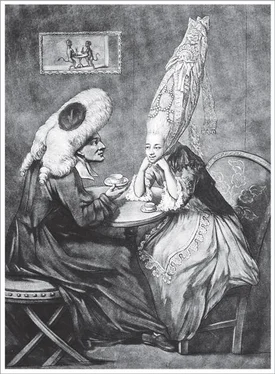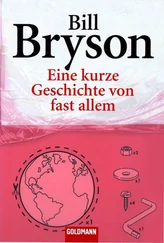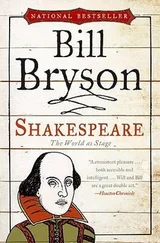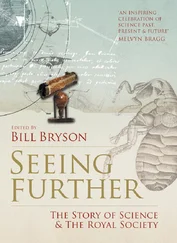Bill Bryson - At Home
Здесь есть возможность читать онлайн «Bill Bryson - At Home» весь текст электронной книги совершенно бесплатно (целиком полную версию без сокращений). В некоторых случаях можно слушать аудио, скачать через торрент в формате fb2 и присутствует краткое содержание. Жанр: Старинная литература, на английском языке. Описание произведения, (предисловие) а так же отзывы посетителей доступны на портале библиотеки ЛибКат.
- Название:At Home
- Автор:
- Жанр:
- Год:неизвестен
- ISBN:нет данных
- Рейтинг книги:4 / 5. Голосов: 1
-
Избранное:Добавить в избранное
- Отзывы:
-
Ваша оценка:
- 80
- 1
- 2
- 3
- 4
- 5
At Home: краткое содержание, описание и аннотация
Предлагаем к чтению аннотацию, описание, краткое содержание или предисловие (зависит от того, что написал сам автор книги «At Home»). Если вы не нашли необходимую информацию о книге — напишите в комментариях, мы постараемся отыскать её.
At Home — читать онлайн бесплатно полную книгу (весь текст) целиком
Ниже представлен текст книги, разбитый по страницам. Система сохранения места последней прочитанной страницы, позволяет с удобством читать онлайн бесплатно книгу «At Home», без необходимости каждый раз заново искать на чём Вы остановились. Поставьте закладку, и сможете в любой момент перейти на страницу, на которой закончили чтение.
Интервал:
Закладка:
The amount of food placed on eighteenth-century tables was staggering, and Woodforde scarcely ever had a meal that he didn’t record lovingly and in full. Here are the items he sat down to at a typical dinner in 1784: Dover sole in lobster sauce, spring chicken, ox tongue, roast beef, soup, fillet of veal with morrells and truffles, pigeon pie, sweetbreads, green goose and peas, apricot jam, cheesecakes, stewed mushrooms, and trifle. At another meal he could choose from a platter of tench, a ham, three fowls, two roasted ducks, a neck of pork, plum pudding and plum tart, apple tart, and miscellaneous fruit and nuts, all washed down with red and white wines, beer, and cider. Nothing got in the way of a good meal. When Woodforde’s sister died, he recorded his sincere grief in his diary but also found space to note: “Dinner today a fine turkey rosted [ sic ].” Nor did anything much from the outside world intrude. The American War of Independence is hardly mentioned. When the Bastille fell in 1789, Woodforde noted the fact but gave more space to what he had for breakfast. Fittingly, the final entry of his diary recorded a meal.
Woodforde was a decent enough human being—he sent food to the poor from time to time and led a life of blameless virtue—but in all the years of his diaries there isn’t any indication that he ever gave a moment’s thought to the composition of a sermon or felt any particular attachment to his parishioners beyond a gladness to join them for dinner whenever the offer was extended. If he didn’t represent what was typical, he certainly represented what was possible.
As for where Mr. Marsham fit into all this, there’s simply no telling. If it was his goal in life to make as little impression as possible upon history, he achieved it gloriously. In 1851, he was twenty-nine years old and unmarried—a condition he kept for life. His housekeeper, a woman with the interestingly unusual name of Elizabeth Worm, stayed with him for some fifty years until her death in 1899, so at least she seemed to find him agreeable enough company, but whether anyone else did, or didn’t, cannot be known.
There is, however, one small, encouraging clue. On the last Sunday of March 1851, the Church of England conducted a national survey to see how many people actually attended church that day. The results were a shock. More than half the people of England and Wales had not gone to church at all, and only 20 percent had gone to an Anglican service. However ingenious they may have been at creating mathematical theorems or compiling Icelandic dictionaries, clearly clergymen were no longer anything like as important to their communities as they once had been. Happily, no sign of that was yet apparent in Mr. Marsham’s parish. The census records show that seventy-nine worshippers attended his morning service that Sunday and eighty-six came in the afternoon. That was almost 70 percent of the parishioners in his benefice—a result much, much better than the national average. Assuming that that was a typical turnout for him, then our Mr. Marsham, it appears, was a well-regarded man.
III
In the same month that the Church of England conducted its attendance survey, Britain also had its decennial census, which put the national population at a confidently precise 20,959,477. This was just 1.6 percent of the world total, but it is safe to say that nowhere was there a more rich and productive fraction. The 1.6 percent of people who were British produced half the world’s coal and iron, controlled nearly two-thirds of its shipping, and engaged in one-third of all trade. Virtually all the finished cotton in the world was produced in British mills on machines invented and built in Britain. London’s banks had more money on deposit than all the other financial centers of the world combined. London was at the heart of a huge and growing empire that would at its peak cover 11.5 million square miles and make “God Save the Queen” the national anthem for a quarter of the world’s people. Britain led the world in virtually every measurable category. It was the richest, most innovative, most accomplished nation of the age—a nation where even gardeners rose to greatness.
Suddenly, for the first time in history, there was in most people’s lives a lot of everything. Karl Marx, living in London, noted with a tone of wonder, and just a hint of helpless admiration, that it was possible to buy five hundred kinds of hammer in Britain. Everywhere was activity. Modern Londoners live in a great Victorian city; the Victorians lived through it, so to speak. In twelve years eight railway termini opened in London. The scale of disruption—the trenches, the tunnels, the muddy excavations, the congestion of wagons and other vehicles, the smoke, the din, the clutter—that came from filling the city with railways, bridges, sewers, pumping stations, power stations, subway lines, and all the rest meant that Victorian London was not just the biggest city in the world but the noisiest, foulest, muddiest, busiest, most choked and dug-over place the world had ever seen.
The 1851 census also showed that more people in Britain now lived in cities than in the countryside—the first time that this had happened anywhere in the world—and the most visible consequence of this was crowds on a scale never before experienced. People now worked en masse, traveled en masse, were schooled, imprisoned, and hospitalized en masse. When they went out to enjoy themselves, they did that en masse, and nowhere did they go with greater enthusiasm and rapture than to the Crystal Palace.
If the building itself was a marvel, the wonders within were no less so. Almost a hundred thousand objects were on display, spread among some fourteen thousand exhibits. Among the novelties were a knife with 1,851 blades, furniture carved from furniture-sized blocks of coal (for no reason other than to show that it could be done), a four-sided piano for homey quartets, a bed that became a life raft and another that automatically tipped its startled occupant into a freshly drawn bath, flying contraptions of every type (except working), instruments for bleeding, the world’s largest mirror, an enormous lump of guano from Peru, the famous Hope and Koh-i-Noor diamonds,* a model of a proposed suspension bridge linking Britain with France, and endless displays of machinery, textiles, and manufactures of every type from all over the world. The Times calculated that it would take two hundred hours to see it all.
Not all displays were equally scintillating. Newfoundland devoted the whole of its exhibition area to the history and manufacture of cod liver oil, and so became an oasis of tranquillity, much appreciated by those who sought relief from the pressing throngs. The United States’ section almost didn’t get filled at all. Congress, in a mood of parsimony, refused to extend funds, so the money had to be raised privately. Unfortunately, when the American products arrived in London it was discovered that the organizers had paid only enough to get the goods to the docks and not onward to Hyde Park. Nor evidently had any money been set aside to erect the displays and man them for five and a half months. Fortunately, the American philanthropist George Peabody, living in London, stepped in and provided $15,000 in emergency funding, rescuing the American delegation from its self-generated crisis. All this reinforced the more or less universal conviction that Americans were little more than amiable backwoodsmen not yet ready for unsupervised outings on the world stage.
So when the displays were erected it came as something of a surprise to discover that the American section was an outpost of wizardry and wonder. Nearly all the American machines did things that the world earnestly wished machines to do—stamp out nails, cut stone, mold candles—but with a neatness, dispatch, and tireless reliability that left other nations blinking. Elias Howe’s sewing machine dazzled the ladies and held out the impossible promise that one of the great drudge pastimes of domestic life could actually be made exciting and fun. Cyrus McCormick displayed a reaper that could do the work of forty men—a claim so improbably bold that almost no one believed it until the reaper was taken out to a farm in the Home Counties and shown to do all that it promised it could. Most exciting of all was Samuel Colt’s repeat-action revolver, which was not only marvelously lethal but made from interchangeable parts, a method of manufacture so distinctive that it became known as “the American system.” Only one homegrown creation could match these virtuoso qualities of novelty, utility, and machine-age precision—Paxton’s great hall itself, and that was to disappear when the show was over. For many Europeans this was the first unsettling hint that those tobacco-chewing rustics across the water were quietly creating the next industrial colossus—a transformation so improbable that most wouldn’t believe it even as it was happening.
Читать дальшеИнтервал:
Закладка:
Похожие книги на «At Home»
Представляем Вашему вниманию похожие книги на «At Home» списком для выбора. Мы отобрали схожую по названию и смыслу литературу в надежде предоставить читателям больше вариантов отыскать новые, интересные, ещё непрочитанные произведения.
Обсуждение, отзывы о книге «At Home» и просто собственные мнения читателей. Оставьте ваши комментарии, напишите, что Вы думаете о произведении, его смысле или главных героях. Укажите что конкретно понравилось, а что нет, и почему Вы так считаете.












